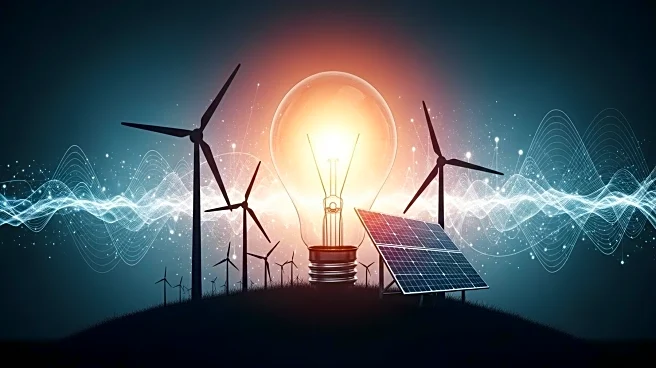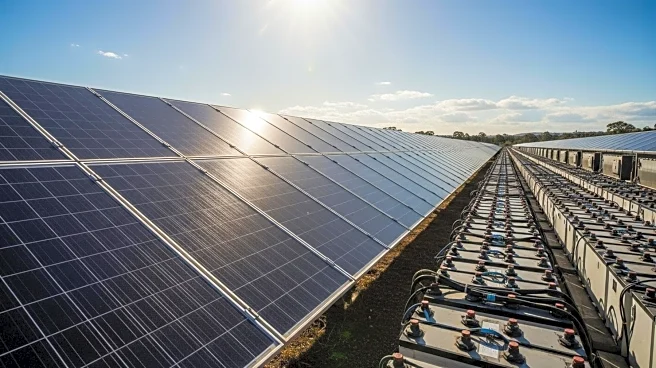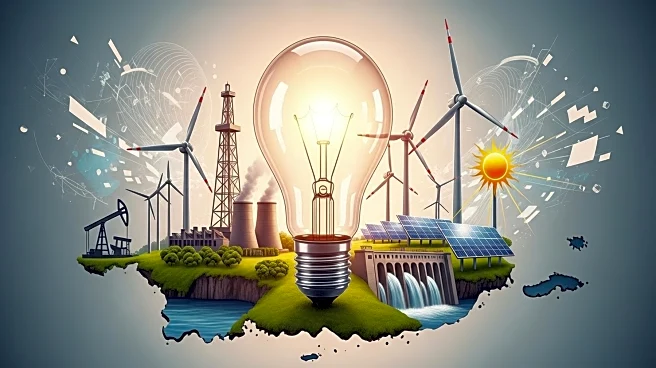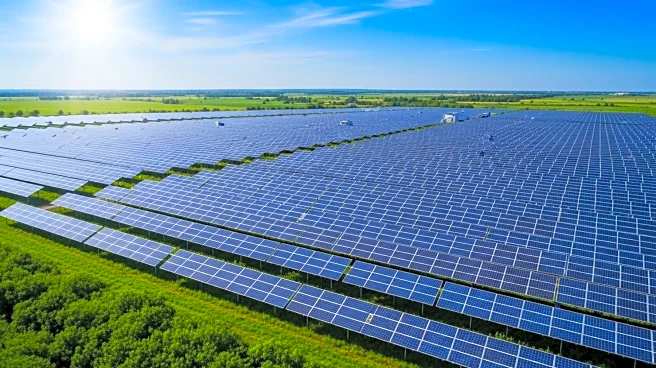What's Happening?
President Trump has signed a significant tax cut bill that phases out most federal tax credits for renewable energy installations. This legislative change has prompted a surge in renewable energy projects,
as developers rush to take advantage of the credits before they expire. BloombergNEF has revised its forecast, predicting record or near-record additions of wind, solar, and battery installations through 2027. Developers are placing orders for equipment like power transformers and solar panels earlier than usual to meet the eligibility criteria for the expiring tax credits.
Why It's Important?
The phasing out of renewable energy tax credits could have substantial implications for the U.S. energy sector. While the immediate rush to complete projects may boost renewable energy capacity, the long-term impact could slow down the transition to cleaner energy sources. This change may affect the competitiveness of renewable energy compared to fossil fuels, potentially influencing energy policy and market dynamics. Stakeholders in the renewable energy industry may face challenges in maintaining growth without federal incentives.
What's Next?
As the deadline for tax credit eligibility approaches, developers are expected to continue accelerating project timelines. The industry may lobby for new policies or incentives to support renewable energy growth post-2027. Political leaders and environmental groups might push for legislative changes to reinstate or replace the credits, aiming to sustain the momentum in renewable energy development.
Beyond the Headlines
The reduction in federal support for renewable energy could lead to increased reliance on state-level incentives and private investments. This shift may alter the landscape of energy production in the U.S., with potential ethical and environmental implications as the country navigates its energy future.












